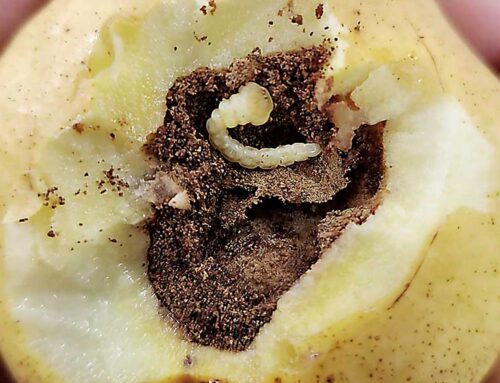The pear industry has unlimited potential and is ripe for a revolution

Amit Dhingra
The pear has been a staple food in Europe for centuries — often the subject of paintings by Van Gogh and highly revered by fables and foodies alike.
Unlike in the U.S., pears in Europe are often enjoyed with a fork and a knife, on a plate, like one might eat a mango or other soft, ripe fruit.
In America, fruit mobility is a prized commodity and one that greatly affects the breeding choices made by growers.
It’s easy for the highly mobile American market to grab an apple to go, and it’s a fairly reliable assumption that the apple you choose will be sweet and ripe.
However, pears when ripened properly are juicy and can be slightly messy and cumbersome. It’s also a much greater challenge to predict and pick a pear at the peak of ripeness from a shelf.
This makes it hard to expand per capita consumption of this delightful fruit as growers struggle to deliver a consistent product.
These challenges help set the stage for an industry that’s been stagnant for the past several decades, with pear varieties that have remained unchanged for nearly 250 years.
The problem is more than just lackluster varieties and lack of innovation. It’s a deeper educational and cultural challenge.
With slow pear consumption growth, there is no real incentive to increase planting or change methods.
Pears are viewed as the “old steady” option for growers.
With a less volatile growing season and relatively stable profits, pears are often consistent and unchanging.
Introduction of new varieties in the past brought about a range of issues, including fire blight, so most growers are content to keep their pear production the same as it has been for generations.
The pear industry has unlimited potential and is ripe for a revolution. The pear itself has superior health benefits compared to apples, including higher fiber content and a lower glycemic index.
Studies have shown they’re better tolerated by people with food allergies and they don’t have the same flavor issues as other “healthy” crops, like kale.
In essence, the pear mostly has a perception problem and has yet to receive the proper attention as have other fruits and vegetables.
If the industry could address the main issues with pears, namely providing a convenient and easy way to consume them while on the go and producing a more consistent flavor profile, why couldn’t they have the same revolution that other, less appealing crops have had?
One potential way to address both issues is in the sliced fruit market. Sliced apples have dominated the sliced produce sector with a market of over $500 million, while the total pear market across all forms currently is just $350 million.
There are several different ways to address the challenges of delivering a consistent and convenient product.
At Washington State University, we are working with a set of ripening compounds meant to consistently ripen pear fruit and enable the production of sliced pears with long shelf life.
This project has received support from the pear industry as well as the Washington State Department of Agriculture.
If sliced pears tasted great consistently, were readily available and had a superior nutrition profile to that of other fruit, who is to say they couldn’t be the rulers of the sliced fruit market?
In addition to facilitating the production of sliced pears, we, and our colleagues, are using improved and faster protocols that allow us to breed dwarfing pear rootstocks and even better varieties.
The hope is to develop solutions across the entire pear value chain in response to the feedback of growers and addressing their top concerns.
By first generating revenue for the industry with sliced pears, we expect to spur innovation and develop a repertoire of varieties that are ready to eat straight off the tree, revolutionizing the pear industry and addressing many of the remaining concerns.
In an area where progress has been slow, there is a lot of opportunity, and in collaboration with the industry, we have laid a foundation for rapid advances. The age of the pears cometh. •
– by Amit Dhingra, Ph.D., an associate professor in WSU’s Department of Horticulture and founder and CSO of Phytelligence, an agricultural biotechnology company.






Thanks for the worthy words
[…] The pear has been a staple food in Europe for centuries — often the subject of paintings by Van Gogh and highly revered by fables and foodies alike. Read the rest of the article here. […]